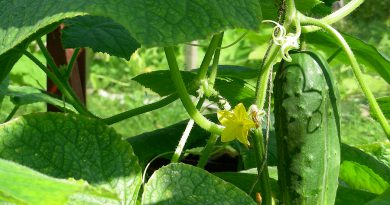Manitoba’s Floral Emblem: The prairie crocus
By Doug Collicutt
One ritual of spring for many Manitoba garden enthusiasts is a visit to the Living Prairie Museum to see the crocuses. The museum, on Ness Avenue in Winnipeg, is an urban nature park where 12 hectares of native tall grass prairie has been preserved — a small reminder of what the land looked like when bison roamed freely. One strolls along the trails amid last year’s brown grasses and glimpses the mauve petals and bright yellow centres of prairie crocuses staring upward.
After months of cold and snow, they are true harbingers of spring. It’s no wonder that the First Nations people and then European settlers had such affection for this plant, and this must have played a role in the selection of the crocus as Manitoba’s floral emblem. It was officially declared such in 1906, after a vote among Manitoba school children.
The prairie crocus (Anemone patens), as its scientific name implies, is really an anemone in the Ranunculaceae or buttercup family. Settlers called this plant a crocus because of its resemblance to European crocuses, both in flower appearance and in early blooming habit. However, European crocuses belong to the Iridaceae, the iris family. Unfortunately, there is still confusion between the two; it’s common to see local flower shows offering European crocuses for sale as Manitoba’s provincial emblem.

Crocus flower buds begin to emerge as soon as the last snows have melted. They open low to the ground, aiming their soft mauve petals and bright yellow anthers towards the sun. The petals act like a parabolic reflector, concentrating the sun’s rays at the flower centre. The thick coat of tiny hairs covering the flower helps to hold in this warmth. Temperatures at the centre of a crocus flower, containing the reproductive parts, can be 10 C above the surrounding air temperatures.
There are advantages to flowering early in spring, but there is a downside, too. The main drawback is the potential to get caught by a late frost. Once the flowers have opened, a severe frost can damage them and eliminate seed production for that year.
You can enjoy crocuses in your garden, but they should not be dug up from the wild. They have deep root systems and don’t transplant well. Crocuses are normally found only on good native prairie, which should always be left alone. Local nurseries can provide the plants, and seeds can be purchased from the Living Prairie Museum or collected around the middle of June on the open prairie.
If the seeds are grey and come off the head easily, they are ripe and should be planted immediately. Because they ripen so early, crocus seeds will take advantage of moist conditions to germinate right away. If moisture is not available, if it’s a dry June, then the seeds will harden off and go dormant. They will only germinate if they are exposed to a period of cool, moist conditions. The germination rate of newly ripened seeds is quite high, while that of over-wintered and stratified seeds is low.

Sow the seeds in deep planting trays on top of a sandy, soil-less mixture that is thoroughly moistened. Light helps them germinate, so don’t cover them with soil. Instead, cover the container with plastic to retain the moisture. Normal germination time can be up to three weeks. Select a sunny, well-drained spot in the garden for the seedlings.
Patience is required as you wait for your first blooms. This is a slow-growing perennial which may take two or three growing seasons to become large enough to produce a flower. But from then on, you can count on more flowers every year. A garden crocus, grown from seed, could in time produce 30 to 60 blossoms a year.
Want to see some wild crocuses? Living Prairie is the best bet in Winnipeg, but there is also Little Mountain Park and the south side of Bird’s Hill Park. Crocuses can be found throughout southwestern Manitoba, wherever there are prairie landscapes or open meadows. South-facing slopes of hills are good places to look. Spruce Woods Provincial Park is also a great place for crocuses.
Timing is a more elusive matter. On the prairies, spring comes when it comes, not according to any calendar date. Mid-April is about the earliest date to start looking. Late April to mid-May is usually prime time, and there may still be some in bloom in early June. This year, treat yourself to a spring walk in a prairie landscape, to seek out and enjoy the crocuses.
Doug Collicutt is a Manitoba biologist and naturalist.








